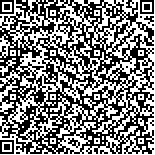| 引用本文: | 王志铮,吴一挺,杨 磊,朱卫东.日本沼虾(Macrobrachium nipponensis)形态性状对体重的影响效应.海洋与湖沼,2011,42(4):612-618. |
| |
|
| |
|
|
| 本文已被:浏览 2524次 下载 3020次 |

码上扫一扫! |
|
|
| 日本沼虾(Macrobrachium nipponensis)形态性状对体重的影响效应 |
|
王志铮1, 吴一挺1,2, 杨 磊1, 朱卫东3
|
|
1.浙江海洋学院水产学院;2.舟山市海洋与渔业局;3.余姚市水产技术推广中心
|
|
| 摘要: |
| 选取日本沼虾 5 月龄同生群雌、雄虾各 90 尾, 分别测量其体重、体长、头胸甲长、胸宽、胸高、腹节长、腹节宽、腹节高、尾节长、尾节宽、尾节高、眼窝距、额剑长等 13 个表型性状, 并采用相关分析、通径分析和偏回归分析等方法定量研究了雌、雄个体形态性状对体重的影响效应。结果表明: (1) 雌、雄测定群体各形态性状测量值间均存在显著的性别差异(P<0.05), 虽各性状与体重间的相关系数均达到极显著水平(P<0.01), 但雄性均明显大于对应的雌性; (2) 经通径分析, 雄性被保留的3个形态性状与体重的复相关指数为0.952, 它们对体重的直接作用呈体长>头胸甲长>胸宽, 雌性被保留的4个形态性状对体重的复相关指数为0.772, 它们对体重的直接作用呈头胸甲长>胸宽>体长>胸高; (3) 经多元回归分析, 用于估算雄性体重回归方程的回归截距和自变量体长、头胸甲长、胸宽的回归系数依次为-4.394、0.069、0.152、0.109, 雌性体重回归方程的回归截距和自变量头胸甲长、胸宽、体长和胸高的回归系数则依次为-2.448、0.029、0.065、0.121、0.105。 |
| 关键词: 日本沼虾, 同生群, 形态性状, 体重, 性别差异, 多元分析 |
| DOI:10.11693/hyhz201104024024 |
| 分类号: |
| 基金项目:浙江省重大科技专项农业项目, 2008C12083 号 |
附件 |
|
| EFFECT OF PHENOTYPIC AND MORPHOMETRIC TRAITS ON BODY WEIGHT OF MACROBRACHIUM NIPPONENSIS |
|
WANG Zhi-Zheng1, WU Yi-Ting1,2, YANG Lei1, ZHU Wei-Dong3
|
|
1.Marine Fishery College of Zhejiang Ocean University;2.Ocean and Fisheries Bureau of Zhoushan City;3.Fishery Technology Extension Center of Yuyao
|
| Abstract: |
| Effect of phenotypic and morphometric traits on body weight of male and female Macrobrachium nipponensis were studied using correlation analysis, path analysis, and regression analysis. 90 males and 90 females of five-month-old individuals were randomly sampled from a cohort of autumn-cultured single species. Body length (BL), carapace length (CL), carapace width (CW), carapace height (CH), total length of the abdominal segment (AL), width of the first abdominal segment (AW), height of the first abdominal segment (AH), telson length (TL), telson height (TH), telson width (TW), rostrum length (RL), distance between eyes (ED), and body weight (BW) were measured for all individual. Correlation coefficients among all the traits were calculated. The results indicated that: (1) the apparent statistics of various traits were significantly different between males and females (P<0.05), and all the correlation coefficients between each phenotypic trait and body weight are at extremely significant level (P<0.01), while all these coefficients of males are much higher than those of females. (2) BL, CL, and CW of males were used as the independent variables, and body weight was used as the dependent variables for path analysis (R2 = 0.952), while CL, CW, BL, and CH of females were used as independent variables, and body weight was used as dependent variables for the path analysis (R2 = 0.772). The path coefficients show BL>CL>CW, and CL>CW>BL>>CH, respectively. (3) Multiple regression equation of the body length, carapace length, and carapace width to the body weight was obtained to estimate male body weight, the regression intercept and partial coefficients of the equation were-4.394, 0.069, 0.152, and 0.109, respectively. Similarly, multiple regression equation of the carapace length, carapace width, body length, and carapace height to the body weight was obtained to estimate female body weight, the regression intercept and partial coefficients of the equation were?-2.448, 0.029, 0.065, 0.121, and 0.105, respectively. |
| Key words: Macrobrachium nipponensis, Cohort, Morphometric trait, Body weight, Gender differences, Multivariate analysis |
|
|
|
|
|
